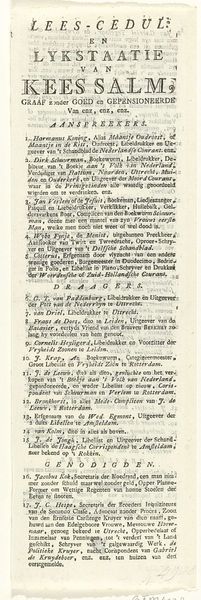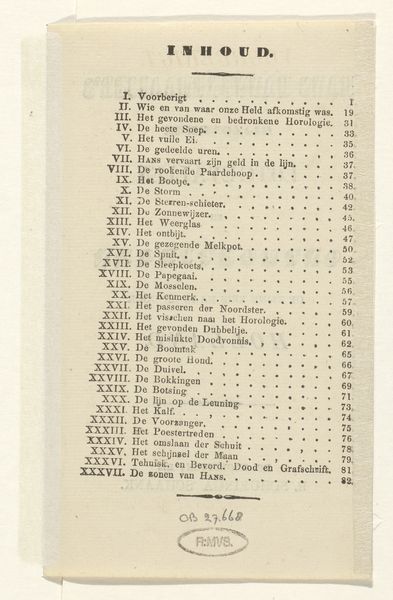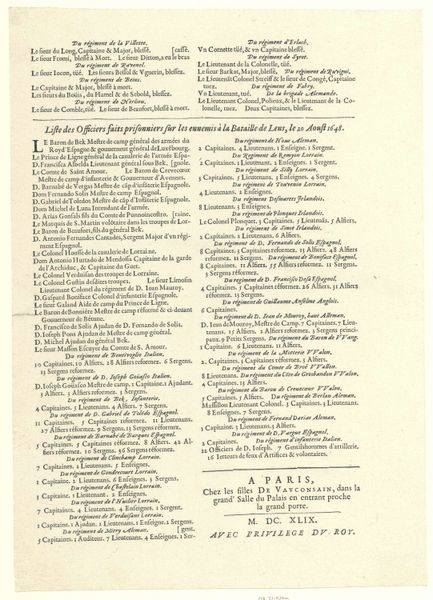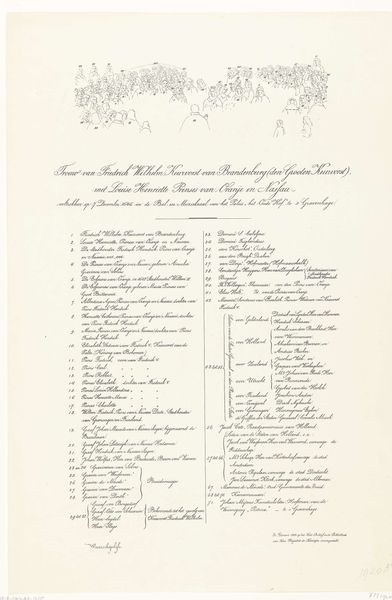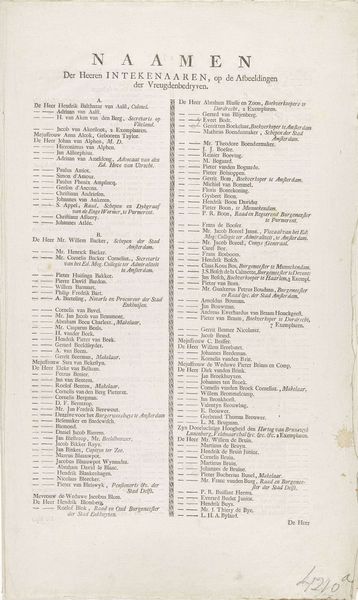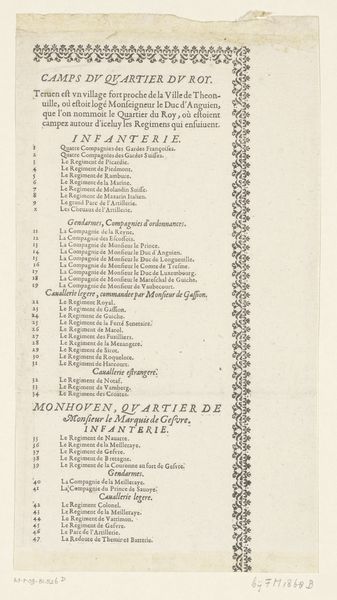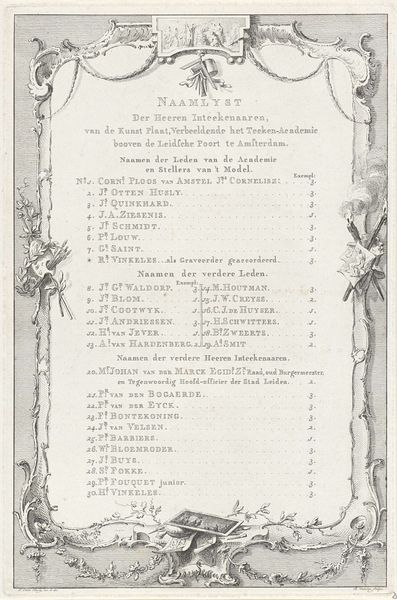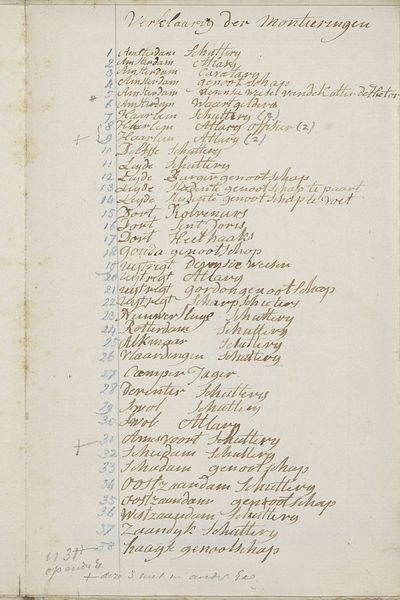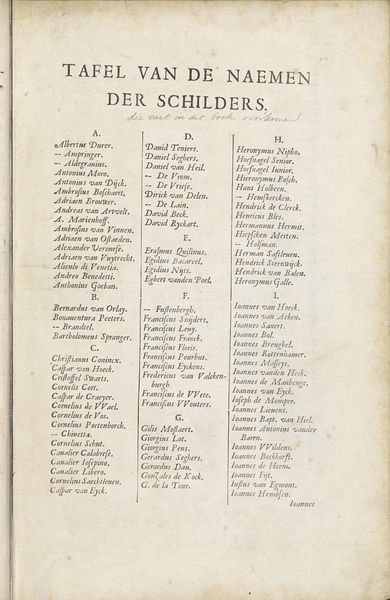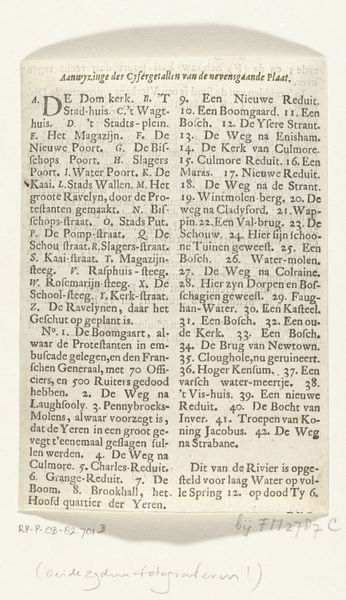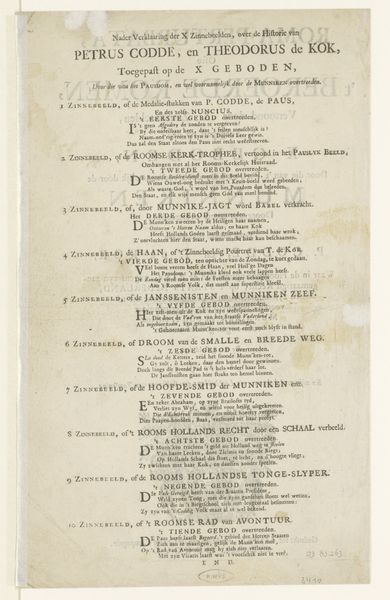
Legenda bij de optocht bij de inwijding van Universiteit van Leiden, 1575 1752 - 1784
0:00
0:00
anonymous
Rijksmuseum
print, paper, engraving
#
dutch-golden-age
# print
#
paper
#
history-painting
#
engraving
Dimensions: height 220 mm, width 132 mm
Copyright: Rijks Museum: Open Domain
Curator: Here at the Rijksmuseum, we have "Legenda bij de optocht bij de inwijding van Universiteit van Leiden, 1575," an engraving on paper that seems to originate between 1752 and 1784. It’s unattributed, marked simply as Anonymous. Editor: Well, it immediately strikes me as rather stark. A densely packed field of text dominates, creating a visual hierarchy that almost feels... bureaucratic? The engraving style is quite detailed, although its small scale seems to limit opportunities for nuanced detail in materials. Curator: You know, your perspective on the text-heavy nature is intriguing. This piece functions almost as a key, explaining the figures involved in the procession during the inauguration of Leiden University back in 1575. Consider this print's social context—the creation of such a visual record served to cement the university's status, weaving it into the very fabric of civic pride. Editor: And the deliberate use of names – almost like a catalog of influential figures of the day – speaks to a very targeted audience, doesn’t it? It would seem those patrons of power used print as a tool to disseminate and preserve the legacy and lineage, essentially broadcasting a specific message concerning influence and patronage. I wonder about the conditions surrounding its creation; who was employing whom? Curator: Absolutely. Engravings were crucial in disseminating knowledge. This was during a period of tremendous social, political and religious change in the Netherlands. This print serves not just as a record but as an active participant in defining Leiden University's role within that rapidly evolving environment. And by not highlighting the materials directly, do you think it also separates itself from folk art and underscores “high” art production values and aesthetics? Editor: It likely elevates the prestige while concealing the labor – both literal and figurative. A well-organized network of individuals surely had to engage in the print’s making, sales, and distribution. It suggests an interesting interplay between artistic production and the emerging social structure. I am struck by how that production impacts art historical interpretations. Curator: Fascinating. Thinking about this work and our brief time exploring its social layers has further enriched my understanding. Thanks for the new lens. Editor: And to mine, reflecting how this medium broadcasts powerful messages while, perhaps unintentionally, obscuring so much more!
Comments
No comments
Be the first to comment and join the conversation on the ultimate creative platform.
